Visit Ancient Sanin
Sanin Region includes Tottori and Shimane prefecture of western Japan. Thanks to the natural blessings and geographic closeness to China and Korea, the ancient civilization of Izumo Province has flourished in todayfs Sanin region. The processing method of irons, introduced from Korea, greatly improved agricultural productivity. Because of the ancient civilization, Sanin region appears in Japanese mythology. One third of the stories in the oldest extant chronicle in Japan gKojikih are said to be set in the San'in region. Even today, you can visit the locations written in the mythology over a thousand years ago. Please enjoy great nature and eternal history of the Sanin region.
-

-
Mt. Daisen
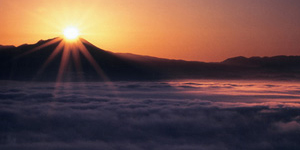
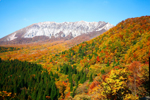 Mt. Daisen is a volcanic mountain located in Tottori Prefecture. It is the highest in the Chugoku region with an elevation of 1,709 meters. It is designated a National Park of Japan for its magnificent landscape. Mt. Daisen is ranked third on Japan's national public broadcaster's (NHK) gThe Japanese Greatest Summits Rankingh, behind Mt. Yari (2nd) and Mt. Fuji. In August 2010, approximately 20,000 people ascended the mountain.
Mt. Daisen is a volcanic mountain located in Tottori Prefecture. It is the highest in the Chugoku region with an elevation of 1,709 meters. It is designated a National Park of Japan for its magnificent landscape. Mt. Daisen is ranked third on Japan's national public broadcaster's (NHK) gThe Japanese Greatest Summits Rankingh, behind Mt. Yari (2nd) and Mt. Fuji. In August 2010, approximately 20,000 people ascended the mountain.
-
Lake Shinji and Nakaumi Lagoon
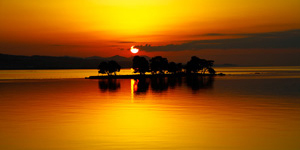
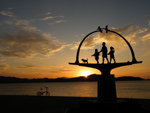 Lake Shinji is the seventh largest lake in Japan, with a circumference of 48km. The lake is connected to the Sea of Japan through Nakaumi Lake. The brackish water supports an abundance of aquatic life. Lake Shinji and Nakaumi together are designated as Ramsar Site of Wetlands of International Importance in 2006.
Lake Shinji is the seventh largest lake in Japan, with a circumference of 48km. The lake is connected to the Sea of Japan through Nakaumi Lake. The brackish water supports an abundance of aquatic life. Lake Shinji and Nakaumi together are designated as Ramsar Site of Wetlands of International Importance in 2006.
-
Yuushien
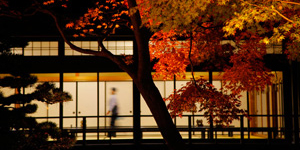
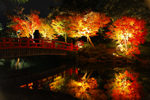 Yuushien is a circuit-style Japanese botanical garden built at the center of Daikonjima, a small volcanic island in the middle of Nakaumi Lake. Daikonjima is administrated by the City of Matsue, and is known as the nation's largest producer of the peony flower, and one of the largest of ginseng. Daikonjimafs ginseng is considered the finest quality in the world. Peonies on the island are in bloom throughout the year.
Yuushien is a circuit-style Japanese botanical garden built at the center of Daikonjima, a small volcanic island in the middle of Nakaumi Lake. Daikonjima is administrated by the City of Matsue, and is known as the nation's largest producer of the peony flower, and one of the largest of ginseng. Daikonjimafs ginseng is considered the finest quality in the world. Peonies on the island are in bloom throughout the year.
-
The Beech Forest and Jizodaki Water Spring
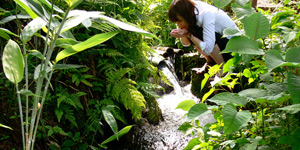
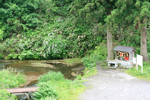 Jizodaki no Izumi (Jizodaki Water Spring) was chosen as one of the 100 best water of Heisei period.
About 0.2 million tons of spring water wells up for a day. The water
remains at constant 11-degree temperature through a whole year. Summer
is the best season to visit the spring. The clean water comes from the beech forest in Mt. Daisen, which is one of the largest in the western Japan.
Jizodaki no Izumi (Jizodaki Water Spring) was chosen as one of the 100 best water of Heisei period.
About 0.2 million tons of spring water wells up for a day. The water
remains at constant 11-degree temperature through a whole year. Summer
is the best season to visit the spring. The clean water comes from the beech forest in Mt. Daisen, which is one of the largest in the western Japan.
-
Tottori Hanakairo Flower Park
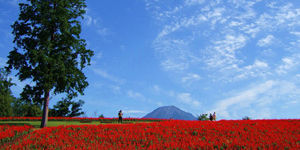
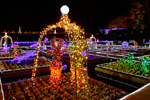 Tottori Hanakairo Flower Park is one of the largest flower parks in Japan. Within its nearly 50 hectares one can find garden beds of a variety of seasonal flowers, a greenhouse flower dome with a diameter of 50m, a flowerbed on water, a European garden, and a roofed walkway spanning almost the entire perimeter of the park. Viewing of illuminated flowers by night, called "Moonlight Flower Garden", is very popular, and held on weekends during July and August, and during summer and winter vacation seasons.
Tottori Hanakairo Flower Park is one of the largest flower parks in Japan. Within its nearly 50 hectares one can find garden beds of a variety of seasonal flowers, a greenhouse flower dome with a diameter of 50m, a flowerbed on water, a European garden, and a roofed walkway spanning almost the entire perimeter of the park. Viewing of illuminated flowers by night, called "Moonlight Flower Garden", is very popular, and held on weekends during July and August, and during summer and winter vacation seasons.
-
Izumo Hinomisaki Lighthouse
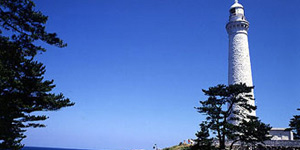
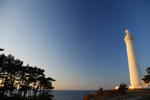 Izumo Hinomisaki lighthouse is located on the coast 8km north of Izumo Taisha Grand Shrine, near Hinomisaki Shrine. It is the highest stone masonry lighthouse in Japan (43.65m), and registered among the top 100 historic lighthouses of the world. Visitors can enjoy the panoramic view of Japan Sea from the top of the lighthouse. The entrance fee is 200 yen.
Izumo Hinomisaki lighthouse is located on the coast 8km north of Izumo Taisha Grand Shrine, near Hinomisaki Shrine. It is the highest stone masonry lighthouse in Japan (43.65m), and registered among the top 100 historic lighthouses of the world. Visitors can enjoy the panoramic view of Japan Sea from the top of the lighthouse. The entrance fee is 200 yen.
-
Masumizu Kougen Chair Lift
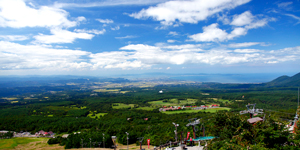
 Masumizu Kougen is a ski slope located on the western face of Mt Daisen. Take the 7 minute chair lift ride up to the observation deck, where you can enjoy a stunning panoramic view of Mt Sentsuu in the south, Yonago City and Nakaumi Lake in the west, and the Sea of Japan in the north. On a clear day, you might even see Matsue City on the western horizon, and the Okinoshima islands on the northern horizon.
Masumizu Kougen is a ski slope located on the western face of Mt Daisen. Take the 7 minute chair lift ride up to the observation deck, where you can enjoy a stunning panoramic view of Mt Sentsuu in the south, Yonago City and Nakaumi Lake in the west, and the Sea of Japan in the north. On a clear day, you might even see Matsue City on the western horizon, and the Okinoshima islands on the northern horizon.
-
Tachikue-kyo Valley
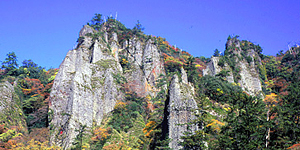
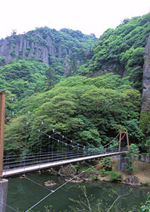 The Tachikue-kyo Valley is located about 8km south of Izumo City, Shimane Prefecture. For 2km one can see pillar rocks that tower 100m to 200m high from ground level up, which was formed by years of water erosion. The area is a well-known designated national scenic spot, as well as a designated natural monument. The area also has a suspended foot-bridge and an onsen hot spring.
The Tachikue-kyo Valley is located about 8km south of Izumo City, Shimane Prefecture. For 2km one can see pillar rocks that tower 100m to 200m high from ground level up, which was formed by years of water erosion. The area is a well-known designated national scenic spot, as well as a designated natural monument. The area also has a suspended foot-bridge and an onsen hot spring.
-
Amenomanai
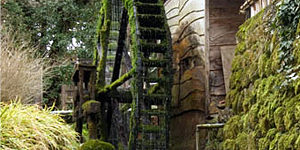
 Amenomanai is a spring located in Yodoe-cho, Yonago City, Tottori Prefecture, and is one of the best spots for getting fresh spring water on Mt Daisen. The water comes directly from the Mt Daisen National Park, which has been selected as one of the 100 Exquisite and Well Conserved Waters by Ministry of the Environment.
Amenomanai is a spring located in Yodoe-cho, Yonago City, Tottori Prefecture, and is one of the best spots for getting fresh spring water on Mt Daisen. The water comes directly from the Mt Daisen National Park, which has been selected as one of the 100 Exquisite and Well Conserved Waters by Ministry of the Environment.
-
Morinokuni
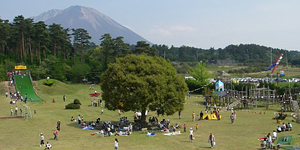
 Morinokuni is a large scaled outdoor playground on Mt Daisen, Tottori Prefecture. Their facilities include playground equipment, jungle gyms, an extensive obstacle course, a campsite, a restaurant, and much more. They also offer eco-tours such as hiking in the beech forest, bicycle tours, river hiking and snowshoe hiking with professional guides. Bicycle rental is also available.
Morinokuni is a large scaled outdoor playground on Mt Daisen, Tottori Prefecture. Their facilities include playground equipment, jungle gyms, an extensive obstacle course, a campsite, a restaurant, and much more. They also offer eco-tours such as hiking in the beech forest, bicycle tours, river hiking and snowshoe hiking with professional guides. Bicycle rental is also available.
-
Kirara Taki
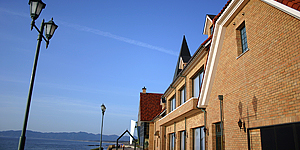 Kirara Taki is a roadside station on National Route 9 in Taki Town, Izumo City, Shimane Prefecture. They stock a wide variety of souvenirs, including the Taki Town specialty, fresh figs and processed fig products like jams, pies and even curry! The Kirara Beach, where Kirara Taki is situated, is popular among the locals, and is a prime spot for watching the beautiful Japanese sunset.
Kirara Taki is a roadside station on National Route 9 in Taki Town, Izumo City, Shimane Prefecture. They stock a wide variety of souvenirs, including the Taki Town specialty, fresh figs and processed fig products like jams, pies and even curry! The Kirara Beach, where Kirara Taki is situated, is popular among the locals, and is a prime spot for watching the beautiful Japanese sunset.
-
Lake Shinji Nature Center Gobius
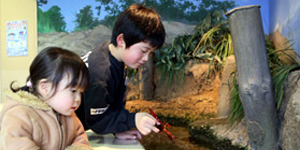
 eGobiusf as it is referred to, is a small aquarium located on the western bank of Lake Shinji in Shimane Prefecture. This recreational and educational facility is Japan's only fresh water and brackish water aquarium, and breeds and exhibits many of the abundant species found in Lake Shinji and nearby rivers. Workshops and educational activities on aquatic animals and wild fowls are held once a month.
eGobiusf as it is referred to, is a small aquarium located on the western bank of Lake Shinji in Shimane Prefecture. This recreational and educational facility is Japan's only fresh water and brackish water aquarium, and breeds and exhibits many of the abundant species found in Lake Shinji and nearby rivers. Workshops and educational activities on aquatic animals and wild fowls are held once a month.
-
Hongu no Izumi
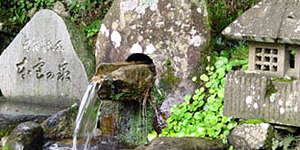
 Hongu no Izumi is a spring located in Yodoe-cho, Yonago City, Tottori Prefecture. It is one of the best springs in Tottori Prefecture, and it pours out 30,000 kl of water a day. The Hongu no Izumi area is the only place in Western Tottori where the Neocheiropteris Ensata (Japanese fern) grows naturally. The spring water is also used for cultivating rainbow trout, masu trout (amago) and carp.
Hongu no Izumi is a spring located in Yodoe-cho, Yonago City, Tottori Prefecture. It is one of the best springs in Tottori Prefecture, and it pours out 30,000 kl of water a day. The Hongu no Izumi area is the only place in Western Tottori where the Neocheiropteris Ensata (Japanese fern) grows naturally. The spring water is also used for cultivating rainbow trout, masu trout (amago) and carp.
-
Daisen Home of Milk
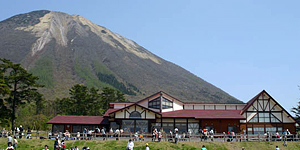
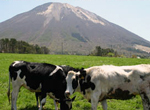 Daisen Home of Milk is a large farm stall on the Daisen Milk Ranch. At an altitude of 600m above sea level, the view of the Sea of Japan from Daisen Home of Milk is magnificent. The restaurant offers a wide variety of food using fresh milk. The restaurantfs special ice cream is very popular. More than 4000 ice creams are sold on a busy day. One can also experience milking a cow and making dairy products.
Daisen Home of Milk is a large farm stall on the Daisen Milk Ranch. At an altitude of 600m above sea level, the view of the Sea of Japan from Daisen Home of Milk is magnificent. The restaurant offers a wide variety of food using fresh milk. The restaurantfs special ice cream is very popular. More than 4000 ice creams are sold on a busy day. One can also experience milking a cow and making dairy products.
-
Daisen Tourist Information Center
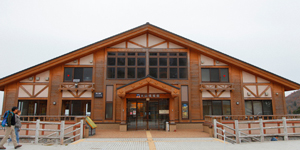
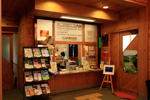 The Daisen Tourist Information Center is situated near the start of the main approach to Daisenji Temple. The Daisenji Temple bus stop is right next to the building, and the ground floor of the building can be used while waiting for the bus. The Information Center is on the second floor. Various brochures and info is available, as well as free wi-fi. Hikers and mountaineers can get the permit for hiking the mountain here. The building is equipped with a lounge room, barrier-free bathroom, dressing room and nursing room.
The Daisen Tourist Information Center is situated near the start of the main approach to Daisenji Temple. The Daisenji Temple bus stop is right next to the building, and the ground floor of the building can be used while waiting for the bus. The Information Center is on the second floor. Various brochures and info is available, as well as free wi-fi. Hikers and mountaineers can get the permit for hiking the mountain here. The building is equipped with a lounge room, barrier-free bathroom, dressing room and nursing room.
-
Yakumo Kazaana
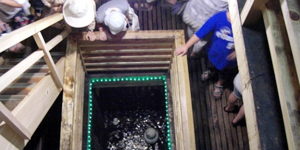
 Yakumo Kazaana is a enatural refrigeratorf located next to Fukusenbou Temple in Sada-cho, Izumo City, Shimane Prefecture. The enatural refrigeratorf is made by cold air (cooled by groundwater) that comes out between the rocks. The average temperature is approximately 10 degrees throughout the year, and in the old days was used as a place to store food. Now it is open during the summer, and attracts many visitors wanting to cool off on a hot summer day.
Yakumo Kazaana is a enatural refrigeratorf located next to Fukusenbou Temple in Sada-cho, Izumo City, Shimane Prefecture. The enatural refrigeratorf is made by cold air (cooled by groundwater) that comes out between the rocks. The average temperature is approximately 10 degrees throughout the year, and in the old days was used as a place to store food. Now it is open during the summer, and attracts many visitors wanting to cool off on a hot summer day.
-
Izumo Orinoki Swan Farm Village
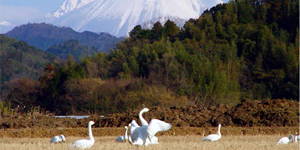
 The Izumo Orinoki Swan Farm Village is situated on the approximately six-kilometer street called eSwan Roadf (Hakucho Road) on Nogi Plain, Shimane Prefecture. The facility displays traditional Kasuri weavings, and sells local foods. Visitors can see weavings and handmade articles, but a reservation is required. Bewickfs swans arriving in winter can also be observed from the observation house inside the village.
The Izumo Orinoki Swan Farm Village is situated on the approximately six-kilometer street called eSwan Roadf (Hakucho Road) on Nogi Plain, Shimane Prefecture. The facility displays traditional Kasuri weavings, and sells local foods. Visitors can see weavings and handmade articles, but a reservation is required. Bewickfs swans arriving in winter can also be observed from the observation house inside the village.
-
Lake Jinzai
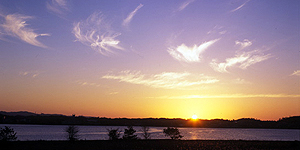
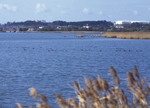 Lake Jinzai is a brackish lake located in Izumo City, Shimane Prefecture. The lake is about 5km in diameter and 1.5km deep, and is a good fishing spot for eel, carp, crucian carp and mullet. It is also known for its large catch of yamato corbicula or shijimi (small brackish water clam), with the catch near Izumo Grand Shrine (Izumo Taisha) regarded as particularly auspicious and very popular.
Lake Jinzai is a brackish lake located in Izumo City, Shimane Prefecture. The lake is about 5km in diameter and 1.5km deep, and is a good fishing spot for eel, carp, crucian carp and mullet. It is also known for its large catch of yamato corbicula or shijimi (small brackish water clam), with the catch near Izumo Grand Shrine (Izumo Taisha) regarded as particularly auspicious and very popular.
-
Kaka-no-kukedo
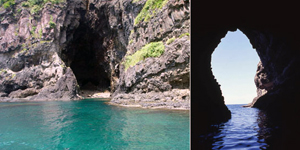
 The Kaka-no-kukedo is a set of caves in the Kaka area, which is north of Matsue City, Shimane Prefecture. The area is part of the rias (deeply indented) coastline facing the Sea of Japan. The Kaka Kukedo Sightseeing Boat departs from Marine Plaza Shimane, and offers 50-minute tours of the caves. The boat will take visitors to gShin Kukedoh which appears in ancient mythology and gKyu Kukedoh which is believed to be the Limbo of Infants in Buddhism. The unique scenery is part of Daisen-Oki National Park, and designated as a national site of scenic beauty and a national natural treasure.
The Kaka-no-kukedo is a set of caves in the Kaka area, which is north of Matsue City, Shimane Prefecture. The area is part of the rias (deeply indented) coastline facing the Sea of Japan. The Kaka Kukedo Sightseeing Boat departs from Marine Plaza Shimane, and offers 50-minute tours of the caves. The boat will take visitors to gShin Kukedoh which appears in ancient mythology and gKyu Kukedoh which is believed to be the Limbo of Infants in Buddhism. The unique scenery is part of Daisen-Oki National Park, and designated as a national site of scenic beauty and a national natural treasure.
-
Hii River
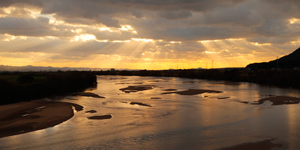 The Hii River is a 153km class 1 river (Japanese classification), which starts from Mt. Sentsu and runs through Lake Shinji, Ohashi River, Nakaumi Lagoon, Sakai Channel, finally reaching the Sea of Japan. There are many mythological places and ruins such as Kojindani Ruins and Kamo Iwakura Ruins along the Hii River. The area used to be prone to flooding, so the Hii River was likened to the mythical creature gYamata no Orochih, the Eight-headed Giant Snake.
The Hii River is a 153km class 1 river (Japanese classification), which starts from Mt. Sentsu and runs through Lake Shinji, Ohashi River, Nakaumi Lagoon, Sakai Channel, finally reaching the Sea of Japan. There are many mythological places and ruins such as Kojindani Ruins and Kamo Iwakura Ruins along the Hii River. The area used to be prone to flooding, so the Hii River was likened to the mythical creature gYamata no Orochih, the Eight-headed Giant Snake.
-

-
Izumo Taisha Grand Shrine
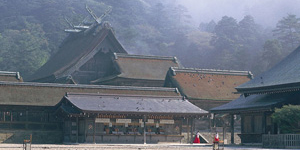
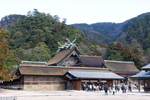 Izumo Taisha (Izumo Grand Shrine) is one of the most ancient and
important shrines in Japan. It is believed that the gods from around Japan gather at the Izumo Grand Shrine every year in October to decide the coming year's births, marriages and deaths. The Shimenawa rope at the shrine is the largest in Japan, weighing an 5 tons.
Izumo Taisha (Izumo Grand Shrine) is one of the most ancient and
important shrines in Japan. It is believed that the gods from around Japan gather at the Izumo Grand Shrine every year in October to decide the coming year's births, marriages and deaths. The Shimenawa rope at the shrine is the largest in Japan, weighing an 5 tons.
-
Shimane Museum of Ancient Izumo
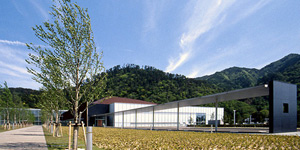
 Opened in March 2007, the Shimane Museum of Ancient Izumo is located next to Izumo Taisha Grand Shrine, and displays
ancient artifacts, including the remains of Izumo Taisha's giant
stairway pillars, Japan's largest collection of excavated bronze swords
and bells, and Japan's only complete version of the Izumo no Kuni Fudoki
(Ancient Chronicles of Izumo).
Opened in March 2007, the Shimane Museum of Ancient Izumo is located next to Izumo Taisha Grand Shrine, and displays
ancient artifacts, including the remains of Izumo Taisha's giant
stairway pillars, Japan's largest collection of excavated bronze swords
and bells, and Japan's only complete version of the Izumo no Kuni Fudoki
(Ancient Chronicles of Izumo).
-
Mihonoseki
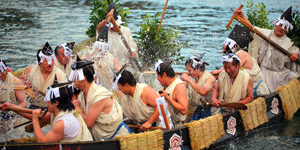
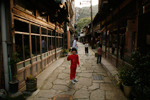 Mihonoseki is a historic small village that includes Miho Shrine, the head shrine of all Ebisu gods in Japan, and the oldest lighthouse in Sanin, Mihonoseki lighthouse.
The Aoishidatami Street (the blue-stone-paved street), which leads from
Miho Shrine to Bukkoku Temple preserves traditional
houses. Mihonoseki used to be the important port, and flourished as
amusement center.@In Taisho era, renowned writers such as Tekkan and
Akiko Yosano and Kyoshi Takahama has visited ryokans on the street. A
shop on the street, Taiko Shoyu, is a long-established shop of soy sauce. It is said that gastronome Kitaoji Rosanjin acclaimed the soy sauce.
Mihonoseki is a historic small village that includes Miho Shrine, the head shrine of all Ebisu gods in Japan, and the oldest lighthouse in Sanin, Mihonoseki lighthouse.
The Aoishidatami Street (the blue-stone-paved street), which leads from
Miho Shrine to Bukkoku Temple preserves traditional
houses. Mihonoseki used to be the important port, and flourished as
amusement center.@In Taisho era, renowned writers such as Tekkan and
Akiko Yosano and Kyoshi Takahama has visited ryokans on the street. A
shop on the street, Taiko Shoyu, is a long-established shop of soy sauce. It is said that gastronome Kitaoji Rosanjin acclaimed the soy sauce.
-
Matsue Castle
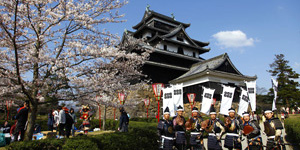
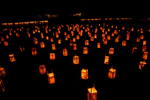 Matsue Castle, one of the 12 remaining castles as in the original
wooden form in Japan, is located in the center of Matsue City. The castle is nicknamed the "plover castle" reason being the outer wall is painted black. The cherry blossoms fill the castle grounds during spring. During a festival called "Suitou-ro"
(
H) held in summer, a lot of lanterns fantastically illuminate Horikawa river that encircles the Matsue Castle.
Matsue Castle, one of the 12 remaining castles as in the original
wooden form in Japan, is located in the center of Matsue City. The castle is nicknamed the "plover castle" reason being the outer wall is painted black. The cherry blossoms fill the castle grounds during spring. During a festival called "Suitou-ro"
(
H) held in summer, a lot of lanterns fantastically illuminate Horikawa river that encircles the Matsue Castle.
-
Mizuki Shigeru Road
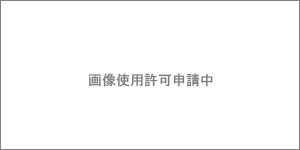 Shigeru Mizuki is a Japanese manga writer, most known for "Gegege no Kitaro", in which he has depicted the Japanese folklore creatures known as Yokai. Sakaiminato is the home of Shigeru Mizuki. Mizuki Shigeru Road is a street dedicated to all the characters that appear in his manga works. For 800 meters from JR Sakaiminato station to Motomachi arcade, more than one hundred bronze statues of Shigeru Mizuki's characters line both sides of the road. Many restaurants and souvenir shops stand in a row on the street.
Shigeru Mizuki is a Japanese manga writer, most known for "Gegege no Kitaro", in which he has depicted the Japanese folklore creatures known as Yokai. Sakaiminato is the home of Shigeru Mizuki. Mizuki Shigeru Road is a street dedicated to all the characters that appear in his manga works. For 800 meters from JR Sakaiminato station to Motomachi arcade, more than one hundred bronze statues of Shigeru Mizuki's characters line both sides of the road. Many restaurants and souvenir shops stand in a row on the street.
-
Mukibanda Remains
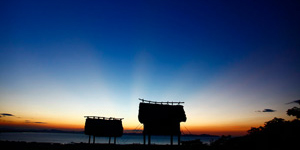
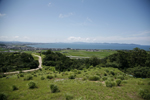 Mukibanda Remains were discovered by accident when
the site was under
preliminary investigation for the construction of golf course from 1995
to 1998. The remains stretch for 156 hectares, which is five times
larger than Yoshinogari Remains in Saga prefecture, which had been said
to be the biggest remains of Yayoi period in Japan at that time.
(Yoshinogari Remains stretched for 32 hectares at that time. As
investigations have proceeded, it turns out to be as twice as large.) Visitors can see the panoramic view of the Japan Sea from the remains.
Mukibanda Remains were discovered by accident when
the site was under
preliminary investigation for the construction of golf course from 1995
to 1998. The remains stretch for 156 hectares, which is five times
larger than Yoshinogari Remains in Saga prefecture, which had been said
to be the biggest remains of Yayoi period in Japan at that time.
(Yoshinogari Remains stretched for 32 hectares at that time. As
investigations have proceeded, it turns out to be as twice as large.) Visitors can see the panoramic view of the Japan Sea from the remains.
-
Ogamiyama Shrine
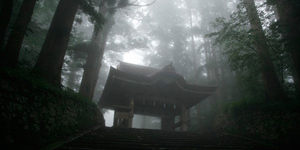
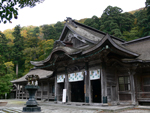 Mt. Daisen was a training area for shugendo. Izumo fudoki (ancient records of the culture and geography of provinces of Japan) and Engishiki (a 927 AD Japanese book of laws and regulations) says that the need for a place to pray for shugendo monks was the beginning of Ogamiyama shrine, but details are unknown. The approach to the shrine is Japan's longest stone-flagged approach (700 meters).
Mt. Daisen was a training area for shugendo. Izumo fudoki (ancient records of the culture and geography of provinces of Japan) and Engishiki (a 927 AD Japanese book of laws and regulations) says that the need for a place to pray for shugendo monks was the beginning of Ogamiyama shrine, but details are unknown. The approach to the shrine is Japan's longest stone-flagged approach (700 meters).
-
Daisenji (Daisen Temple)
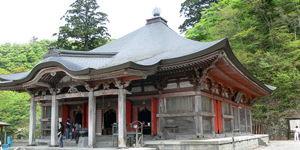
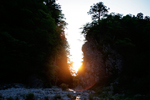 Daisenji is a Buddhist temple located in the middle of Mt. Daisen. The
temple had flourished as a training area for shugendo from 7th to 14th
century. More than 100 temples and 3,000 armed priests used to be under
the control of the temple at the height of its prosperity. The authority
was no smaller than Mount Hiei, Mount Yoshino and Mount Koya. The temple was destroyed by fire in 1928, and reconstructed in 1951. Ogamiyama Shrine is located above the temple.
Daisenji is a Buddhist temple located in the middle of Mt. Daisen. The
temple had flourished as a training area for shugendo from 7th to 14th
century. More than 100 temples and 3,000 armed priests used to be under
the control of the temple at the height of its prosperity. The authority
was no smaller than Mount Hiei, Mount Yoshino and Mount Koya. The temple was destroyed by fire in 1928, and reconstructed in 1951. Ogamiyama Shrine is located above the temple.
-
Enryuin Temple
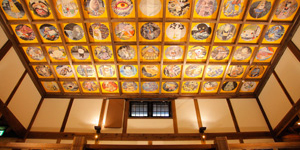
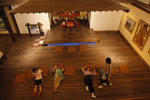 Enryuin temple has a history of 200 years. The aging temple was reconstructed in 2009 for safety purpose. The most significant feature of the temple is the roof painting of Yokai, preternatural creatures in Japanese folklore, drawn by a local distinguished manga artist, Shigeru Mizuki. The former chief priest Tozen (嗒R) in Edo period was a well-known painter. In tribute to Tozen, the ceiling was decorated with the paintings.
Enryuin temple has a history of 200 years. The aging temple was reconstructed in 2009 for safety purpose. The most significant feature of the temple is the roof painting of Yokai, preternatural creatures in Japanese folklore, drawn by a local distinguished manga artist, Shigeru Mizuki. The former chief priest Tozen (嗒R) in Edo period was a well-known painter. In tribute to Tozen, the ceiling was decorated with the paintings.
-
Izumo Yayoinomori Museum
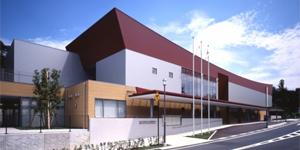
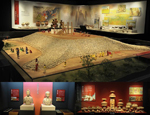 The Izumo Yayoinomori Museum is situated across the road from the Nishidani Tumuli Park, a cluster of Yayoi Period tombs on the hill a little southeast of Izumo Station.
The museum exhibits the grave goods excavated from the adjacent tombs as well as dioramas showing how they believe the tombs were constructed, and the internal structure. The tombs are believed to have been constructed in the early 3rd century when peoplefs lives depended on agriculture, and is characterized by unglazed pottery, bronze ware and ironware. Admission is free.
The Izumo Yayoinomori Museum is situated across the road from the Nishidani Tumuli Park, a cluster of Yayoi Period tombs on the hill a little southeast of Izumo Station.
The museum exhibits the grave goods excavated from the adjacent tombs as well as dioramas showing how they believe the tombs were constructed, and the internal structure. The tombs are believed to have been constructed in the early 3rd century when peoplefs lives depended on agriculture, and is characterized by unglazed pottery, bronze ware and ironware. Admission is free.
-
Kamiyodo Hakuho-no-Oka Exhibition Hall
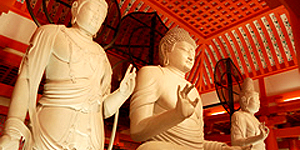
 The exhibition hall is situated right next to Kamiyodo Haiji Ruins, a cluster of Buddhist temples believed to have been constructed during the Asuka period, from the end of the 7th to the beginning of the 8th century. The museum exhibits fragments of early Buddhist wall painting excavated from the adjacent ruins, which is as old as Horyuji temple, a UNESCO World Heritage Site in Nara Prefecture, along with decorated pottery and haniwa statues. A must see is the golden hall reconstructed to its original size, the three Buddha sculptures and the richly colored wall paintings.
The exhibition hall is situated right next to Kamiyodo Haiji Ruins, a cluster of Buddhist temples believed to have been constructed during the Asuka period, from the end of the 7th to the beginning of the 8th century. The museum exhibits fragments of early Buddhist wall painting excavated from the adjacent ruins, which is as old as Horyuji temple, a UNESCO World Heritage Site in Nara Prefecture, along with decorated pottery and haniwa statues. A must see is the golden hall reconstructed to its original size, the three Buddha sculptures and the richly colored wall paintings.
-
Hinomisaki Shrine
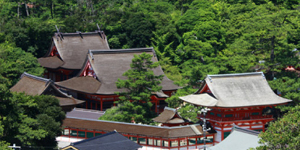
 Hinomisaki Shrine is located on the coast about 8km north of Izumo Taisha Grand Shrine, near the Hinomisaki Lighthouse. The carvings of the main hall, amongst others, are beautiful sculptures of traditional subjects like dragons, tigers, cranes, tortoises and of the auspicious pine, bamboo and plum. The vermillion-lacquered shrine is a nationally designated important cultural property. Connected to the shrine, about 100 meters away, is a small un-inhabited island called Fumishima, which is off limits to all except Shinto priests, as it is considered an object of worship. The island is also a breeding site for black-tailed gull, and therefore is also a designated natural monument.
Hinomisaki Shrine is located on the coast about 8km north of Izumo Taisha Grand Shrine, near the Hinomisaki Lighthouse. The carvings of the main hall, amongst others, are beautiful sculptures of traditional subjects like dragons, tigers, cranes, tortoises and of the auspicious pine, bamboo and plum. The vermillion-lacquered shrine is a nationally designated important cultural property. Connected to the shrine, about 100 meters away, is a small un-inhabited island called Fumishima, which is off limits to all except Shinto priests, as it is considered an object of worship. The island is also a breeding site for black-tailed gull, and therefore is also a designated natural monument.
View Hinomisaki Shrine in a larger map -
Kojindani Archaeological Ruins and Museum
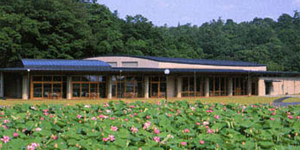
 Between 1984 and 1985, 358 bronze swords, 6 bronze vessels (bronze bells) and 16 bronze pikes were excavated at the Kojindani Ruins. The find drew national attention when it was discovered, for the number of swords discovered at this site exceeds the total number of bronze swords excavated throughout the whole of Japan to date. This important discovery shed new light on the history of ancient Izumo, indicating that perhaps the legend of Izumo, which up until then was believed to have been a mythological kingdom, might be based on fact. This entire find is a designated national treasure, and is on semi-permanent exhibit at The Shimane Museum of Ancient Izumo.
Between 1984 and 1985, 358 bronze swords, 6 bronze vessels (bronze bells) and 16 bronze pikes were excavated at the Kojindani Ruins. The find drew national attention when it was discovered, for the number of swords discovered at this site exceeds the total number of bronze swords excavated throughout the whole of Japan to date. This important discovery shed new light on the history of ancient Izumo, indicating that perhaps the legend of Izumo, which up until then was believed to have been a mythological kingdom, might be based on fact. This entire find is a designated national treasure, and is on semi-permanent exhibit at The Shimane Museum of Ancient Izumo.
-
Matsue History Museum
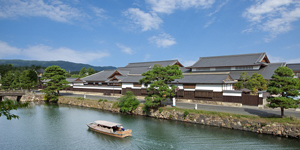 The Matsue History Museum is located in the old Samurai residential area next to Matsue Castle in Matsue City, Shimane Prefecture. The museum showcases the history and culture of the Matsue castle town 400 years ago. The International Tourist Information Office is located inside the museum.
The Matsue History Museum is located in the old Samurai residential area next to Matsue Castle in Matsue City, Shimane Prefecture. The museum showcases the history and culture of the Matsue castle town 400 years ago. The International Tourist Information Office is located inside the museum.
-
Kiyomizu Temple
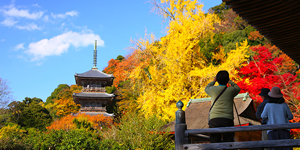
 The Kiyomizu Temple, which is believed to have been founded in 587AD, is located in Yasugi City, Shimane Prefecture. The temple is a sacred place of Kannon (Guanyin), the Buddhist Goddess of Mercy. The Goddess Kannon is known for her compassion and protection, and is one of the most revered bodhisattvas in Japan. Visitors to the temple are welcomed by splendid views of cherry blossoms in spring, bright green leaves in summer, and colored leaves in autumn.
The Kiyomizu Temple, which is believed to have been founded in 587AD, is located in Yasugi City, Shimane Prefecture. The temple is a sacred place of Kannon (Guanyin), the Buddhist Goddess of Mercy. The Goddess Kannon is known for her compassion and protection, and is one of the most revered bodhisattvas in Japan. Visitors to the temple are welcomed by splendid views of cherry blossoms in spring, bright green leaves in summer, and colored leaves in autumn.
-
Inasa Beach
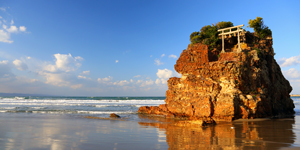
 Inasa Beach is about 10 minutes walk from the Izumo Grand Shrine, in Izumo City, Shimane Prefecture. It is believed to be the entrance the gods from around Japan are welcomed at when they gather at the Izumo Grand Shrine every year in October to decide the coming yearfs births, marriages and deaths.
Inasa Beach is about 10 minutes walk from the Izumo Grand Shrine, in Izumo City, Shimane Prefecture. It is believed to be the entrance the gods from around Japan are welcomed at when they gather at the Izumo Grand Shrine every year in October to decide the coming yearfs births, marriages and deaths.
-
Susa Shrine
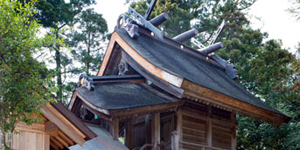
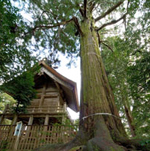 The Susa Shrine is located deep in the hills of Sada, Izumo City, Shimane Prefecture. There are many shrines around Japan which enshrines the God Susanoo-no-Mikoto, but Susa Shrine is the only one where he lays his spirit to rest. According to the ancient chronicles, Susanoo-no-Mikoto fell in love with the area of Susa and decided to lay his spirit to rest there after he handed power over to his descendants.
The Susa Shrine is located deep in the hills of Sada, Izumo City, Shimane Prefecture. There are many shrines around Japan which enshrines the God Susanoo-no-Mikoto, but Susa Shrine is the only one where he lays his spirit to rest. According to the ancient chronicles, Susanoo-no-Mikoto fell in love with the area of Susa and decided to lay his spirit to rest there after he handed power over to his descendants.
-
Nagahama Shrine
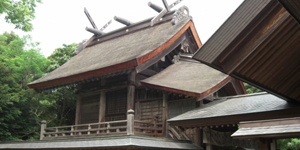
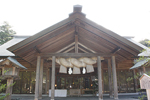 Nagahama Shrine is located in Nishizono Town, Izumo City, Shimane Prefecture. The shrine is dedicated to the god Yatsuka Mizuomi Tsunu-no-Mikoto who appears in the Kunibiki Shinwa (The Land-pulling Legend) as the god who pulled together and created the ancient land of Izumo. Therefore, he is also the god one prays to to epull inf happiness, marriage and wealth. In martial arts and sport he is the god of improvement and victory.
Nagahama Shrine is located in Nishizono Town, Izumo City, Shimane Prefecture. The shrine is dedicated to the god Yatsuka Mizuomi Tsunu-no-Mikoto who appears in the Kunibiki Shinwa (The Land-pulling Legend) as the god who pulled together and created the ancient land of Izumo. Therefore, he is also the god one prays to to epull inf happiness, marriage and wealth. In martial arts and sport he is the god of improvement and victory.
-
Former Taisha Station
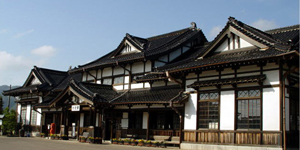 The original Taisha Station building was built in 1912 with the opening of national railway Taisha Station, and was reconstructed in February 1924. It is an authentic Japanese-style wooden building. The JR (Japan Railways) Taisha Line was abolished on 31 March 1990, and in 2004 the former Taisha Station was designated as a cultural asset of national importance.
The original Taisha Station building was built in 1912 with the opening of national railway Taisha Station, and was reconstructed in February 1924. It is an authentic Japanese-style wooden building. The JR (Japan Railways) Taisha Line was abolished on 31 March 1990, and in 2004 the former Taisha Station was designated as a cultural asset of national importance.
-
Mankusen Shrine
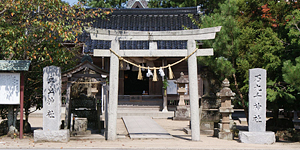
-
Izumo Traditional Cultural Heritage Museum
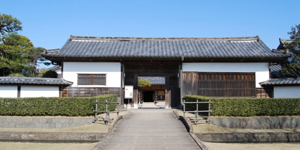
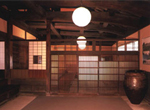 The Izumo Traditional Cultural Heritage Museum is situated in Hama-cho, Izumo City. The museum aims to maintain the original landscape of Izumo, showcase its culture to visitors, and so keep its tradition. The main traditional building is a former house of the Esumi clan, who used to be a large landowner. The museum also has an Izumo-style Japanese garden and tearoom. The wall-shaped array of pine trees in the garden is called gTsuizi Matsuh, which protects against winter winds, and is a distinctive part of the landscape of the Izumo region.
The Izumo Traditional Cultural Heritage Museum is situated in Hama-cho, Izumo City. The museum aims to maintain the original landscape of Izumo, showcase its culture to visitors, and so keep its tradition. The main traditional building is a former house of the Esumi clan, who used to be a large landowner. The museum also has an Izumo-style Japanese garden and tearoom. The wall-shaped array of pine trees in the garden is called gTsuizi Matsuh, which protects against winter winds, and is a distinctive part of the landscape of the Izumo region.
-
Wako Museum (Japanese Steel Museum)
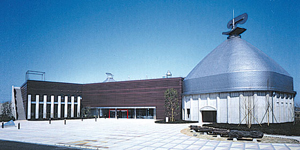 The Wako Museum is Japanfs largest museum featuring iron and steel, located in Yasugi City, Shimane Prefecture. eWakof refers to Japanese steel made from iron produced by the special iron-manufacturing process called etataraf. The tatara iron-manufacturing process was introduced to Japan in the 6th century CE, and was used in the Chugoku mountainous areas, including Tottori and Shimane Prefecture. There was a time that production in the Chugoku area accounted for 80% of national production. Yasugi City was a steel shipping port, and even now is known as The Steel City. The museum features the tatara iron-manufacturing process, as well as iron making tools, swords, body armor, and the latest iron and steel research materials.
The Wako Museum is Japanfs largest museum featuring iron and steel, located in Yasugi City, Shimane Prefecture. eWakof refers to Japanese steel made from iron produced by the special iron-manufacturing process called etataraf. The tatara iron-manufacturing process was introduced to Japan in the 6th century CE, and was used in the Chugoku mountainous areas, including Tottori and Shimane Prefecture. There was a time that production in the Chugoku area accounted for 80% of national production. Yasugi City was a steel shipping port, and even now is known as The Steel City. The museum features the tatara iron-manufacturing process, as well as iron making tools, swords, body armor, and the latest iron and steel research materials.
-
Yaegaki Shrine
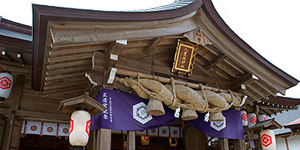
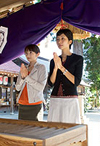 The Yaegaki Shrine is situated in Matsue City, Shimane Prefecture. The gods Susanoo and princess Kushinada, who both appear in the well-known Japanese myth gYamata no Orochi h (Eight-headed Giant Snake), are enshrined here. As they are regarded as the first gods who got married officially, this shrine is dedicated to marriage and matchmaking.
The Yaegaki Shrine is situated in Matsue City, Shimane Prefecture. The gods Susanoo and princess Kushinada, who both appear in the well-known Japanese myth gYamata no Orochi h (Eight-headed Giant Snake), are enshrined here. As they are regarded as the first gods who got married officially, this shrine is dedicated to marriage and matchmaking.
-
Sada Shrine
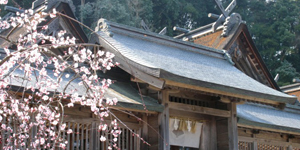
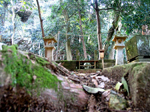 The Sada Shrine is situated in Matsue City, Shimane Prefecture. The shrine is historical and influential, second only to Izumo Grand Shrine (Izumo Taisha). The main deity enshrined is Sada no Okami, also known as Sarutahiko, who is believed to be the god of guidance. Sada Jin-noh , which was the origin of Izumo style Kagura (spiritual dance) is designated as an important intangible cultural heritage, and is played on the 24th and 25th of September.
The Sada Shrine is situated in Matsue City, Shimane Prefecture. The shrine is historical and influential, second only to Izumo Grand Shrine (Izumo Taisha). The main deity enshrined is Sada no Okami, also known as Sarutahiko, who is believed to be the god of guidance. Sada Jin-noh , which was the origin of Izumo style Kagura (spiritual dance) is designated as an important intangible cultural heritage, and is played on the 24th and 25th of September.
-
Kamosu Shrine
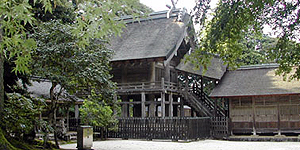
-
Izumo Folk Crafts Museum
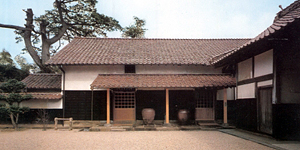 The Izumo Folk Crafts Museum is in Izumo City, Shimane Prefecture. The premises is the former residence of the Yamamoto family, a well to do family of farmers, which was partly restored and reopened as a folk crafts museum. The main hall exhibits traditional everyday living equipment such as indigo dyed cloth, cotton Kasuri, woodworks and ceramics. The west hall exhibits equipment for work such as farm tools.
The Izumo Folk Crafts Museum is in Izumo City, Shimane Prefecture. The premises is the former residence of the Yamamoto family, a well to do family of farmers, which was partly restored and reopened as a folk crafts museum. The main hall exhibits traditional everyday living equipment such as indigo dyed cloth, cotton Kasuri, woodworks and ceramics. The west hall exhibits equipment for work such as farm tools.
-
Ichibata Yakushi Temple
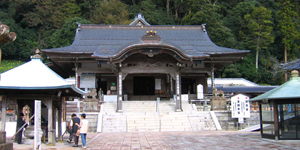
 For centuries the Ichibata Yakushi temple has been known throughout Japan as the Yakushi of healing eyes, evidenced by many visitors the temple receives every year. The temple is located high on the hills surrounding Lake Shinji, giving one a beautiful view of the lake and the forest surrounding the temple. Another well-known feature of the temple is its 1300 stone step approach, which is included in the course of the Ichibata Marathon held annually.
For centuries the Ichibata Yakushi temple has been known throughout Japan as the Yakushi of healing eyes, evidenced by many visitors the temple receives every year. The temple is located high on the hills surrounding Lake Shinji, giving one a beautiful view of the lake and the forest surrounding the temple. Another well-known feature of the temple is its 1300 stone step approach, which is included in the course of the Ichibata Marathon held annually.
-
Karakama Shrine
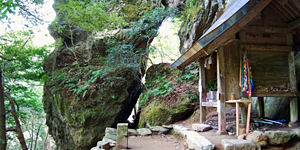
 Karakama Shrine is located in the deep forest near Gakuenji Temple, about 5km from the coast. The road to the shrine is not paved, and the neighborhood is a mysterious and secluded area, which few people know about. After a 15-minute walk up the mountain, one has to go through a narrow crack in the rock wall to get to the shrine. The name gKarakamah means gKoreah (Kara) and gforgeh (kama), which indicates that iron extraction and processing methodologies were introduced to Izumo from Korea.
Karakama Shrine is located in the deep forest near Gakuenji Temple, about 5km from the coast. The road to the shrine is not paved, and the neighborhood is a mysterious and secluded area, which few people know about. After a 15-minute walk up the mountain, one has to go through a narrow crack in the rock wall to get to the shrine. The name gKarakamah means gKoreah (Kara) and gforgeh (kama), which indicates that iron extraction and processing methodologies were introduced to Izumo from Korea.
-
Koukokuji Temple
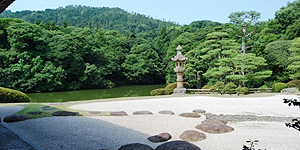
 Koukoji Temple is an old traditional temple situated in Unshu Hirata in Shimane Prefecture. The temple was founded in 1322, and a must see is the beautiful Japanese zen garden completed over a period of three and a half years from 1830 by the landscape gardener Sawa Gentan. It is the Izumo-style garden, and has the borrowed landscape of Mt. Tabushi (altitude 456m) and a water reservoir (approximately 100m²). The garden has been chosen as the eighth and twelfth best garden in Japan by the Journal of Japanese Gardening in 2005 and 2006 respectively.
Koukoji Temple is an old traditional temple situated in Unshu Hirata in Shimane Prefecture. The temple was founded in 1322, and a must see is the beautiful Japanese zen garden completed over a period of three and a half years from 1830 by the landscape gardener Sawa Gentan. It is the Izumo-style garden, and has the borrowed landscape of Mt. Tabushi (altitude 456m) and a water reservoir (approximately 100m²). The garden has been chosen as the eighth and twelfth best garden in Japan by the Journal of Japanese Gardening in 2005 and 2006 respectively.
-

-
Tamatsukuri Hot Springs
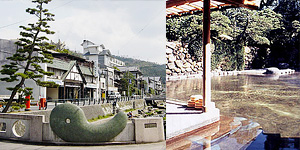
-
Kaike Hot Spring and Swimming Beach
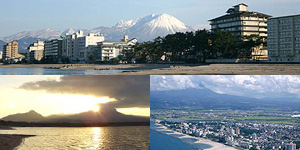
 Keike Onsen (hot spring) is a hot spring resort by the seaside that
overlooks the Yumigahama Peninsula's beautiful sandy beach with white
sand and green pine trees that faces the Sea of Japan. Kaike Onsen is
the largest hot spring resort in Sanin region with accommodation
available for as many as 5,000 visitors. The hot spring wells up from the sea. Its calcium and salt
content are considered to be beneficial especially for skin. Kaike
Swimming Beach spreads out in front of Kaike Hot Spring. The beach is
crowded with many sea-goers in summer. The beach has been selected as
one of the 88 Best Swimming Beaches in Japan.
Keike Onsen (hot spring) is a hot spring resort by the seaside that
overlooks the Yumigahama Peninsula's beautiful sandy beach with white
sand and green pine trees that faces the Sea of Japan. Kaike Onsen is
the largest hot spring resort in Sanin region with accommodation
available for as many as 5,000 visitors. The hot spring wells up from the sea. Its calcium and salt
content are considered to be beneficial especially for skin. Kaike
Swimming Beach spreads out in front of Kaike Hot Spring. The beach is
crowded with many sea-goers in summer. The beach has been selected as
one of the 88 Best Swimming Beaches in Japan.
-
Saginoyu Onsen Hot Spring
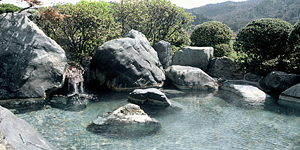
-
Yunokawa Onsen Hot Spring
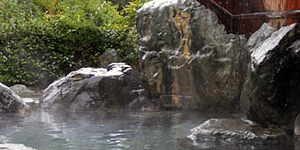
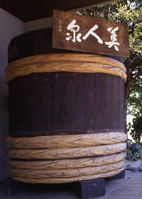 The Yunokawa Onsen hot spring is located in Izumo City, Shimane Prefecture, and is one of three hot springs in Japan that promises beauty as a result of bathing in their waters. It is also one of the many hot springs throughout the prefecture that are said to have been enjoyed by both people, in ancient times, and by the gods since its beginnings. The hot springfs water has a high concentration of boric acid, which is believed to be good for the skin.
The Yunokawa Onsen hot spring is located in Izumo City, Shimane Prefecture, and is one of three hot springs in Japan that promises beauty as a result of bathing in their waters. It is also one of the many hot springs throughout the prefecture that are said to have been enjoyed by both people, in ancient times, and by the gods since its beginnings. The hot springfs water has a high concentration of boric acid, which is believed to be good for the skin.
-
Matsue Shinjiko Onsen Hot Spring
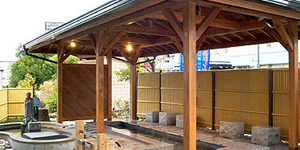 Matsue Shinjiko Onsen Hot Spring is on the northern shore of Lake Shinji (Shinji-ko) in Matsue City, Shimane Prefecture. The hot spring has been open since 1971. The water comes from 1,250 meters underground, and the temperature is 77C. It is a sodium/calcium sulfate/chloride spring, and is said to be effective for the treatment of ailments such as neuralgia, pain in the joints and muscles, and sensitivity to the cold. Bathing is possible at any of the eight ryokans near the Matsue Shinjiko Onsen Station. There is also a free public footbath in front of the station open 24 hours a day. Towels are available for 100yen at the station kiosk.
Matsue Shinjiko Onsen Hot Spring is on the northern shore of Lake Shinji (Shinji-ko) in Matsue City, Shimane Prefecture. The hot spring has been open since 1971. The water comes from 1,250 meters underground, and the temperature is 77C. It is a sodium/calcium sulfate/chloride spring, and is said to be effective for the treatment of ailments such as neuralgia, pain in the joints and muscles, and sensitivity to the cold. Bathing is possible at any of the eight ryokans near the Matsue Shinjiko Onsen Station. There is also a free public footbath in front of the station open 24 hours a day. Towels are available for 100yen at the station kiosk.
-
Kappo Onsen Yurari
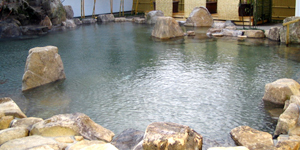
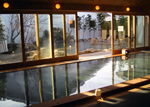 Kappo Onsen Yurari is located in Izumo City, Shimane Prefecture, and is one of the biggest onsen hot spring facilities in the Chugoku region. Remarkably, the hot water supply comes directly form a fountainhead without any control of the temperature or pressure. A large open-air bath (approx. 165m²), a cypress bath, barrel baths, a steam bath and others are available. Please enjoy a relaxing time in the spacious hot spring.
Kappo Onsen Yurari is located in Izumo City, Shimane Prefecture, and is one of the biggest onsen hot spring facilities in the Chugoku region. Remarkably, the hot water supply comes directly form a fountainhead without any control of the temperature or pressure. A large open-air bath (approx. 165m²), a cypress bath, barrel baths, a steam bath and others are available. Please enjoy a relaxing time in the spacious hot spring.
-

-
Lafcadio Hearn Memorial Museum
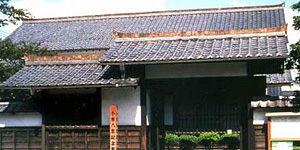
-
Adachi Museum of Art
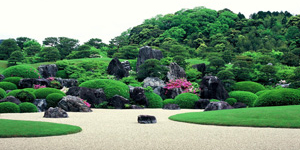
 The Adachi Museum of Art is best known for its award winning garden. It
has been named the best garden in Japan annually since 2003 by the
Journal of Japanese Gardening. The museum was founded by Adachi Zenko in
1980. He traveled all across Japan to collect pine trees and rocks for
the garden. In addition to the gardens, the museum also houses the art
works of Taikan Yokoyama.
The Adachi Museum of Art is best known for its award winning garden. It
has been named the best garden in Japan annually since 2003 by the
Journal of Japanese Gardening. The museum was founded by Adachi Zenko in
1980. He traveled all across Japan to collect pine trees and rocks for
the garden. In addition to the gardens, the museum also houses the art
works of Taikan Yokoyama.
-
Kamogawa and Nakaumi Sightseeing Boat
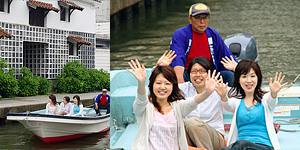
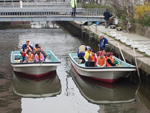 Kamogawa and Nakaumi Sightseeing boat embarks from the Kamogawa River to Nakaumi Lagoon. Please enjoy the traditional scenery of Yonago City while listening a boatman's guide.
The guide is available in Japanese only. The tour is held twice a day, and takes approximately 1 hour.
One can experience feeding the gulls at the Nakaumi Lake.
Kamogawa and Nakaumi Sightseeing boat embarks from the Kamogawa River to Nakaumi Lagoon. Please enjoy the traditional scenery of Yonago City while listening a boatman's guide.
The guide is available in Japanese only. The tour is held twice a day, and takes approximately 1 hour.
One can experience feeding the gulls at the Nakaumi Lake.
-
Shoji Ueda Museum of Photography
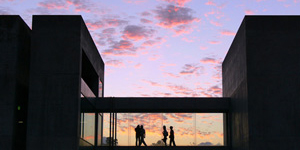
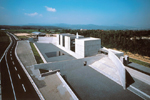 The Shoji Ueda Photography of Museum is located in Houki town, and exhibits works of an internationally-acclaimed photographer Shoji Ueda, who has left a lot of famous photographs using the
unique method to lay out the photographic models as surrealist
compositional elements with realistic depiction. His distinctive style has been broadly introduced as
"Ueda-cho" in France. His audacious composition against the backdrop of Tottori sand dunes
gives people a fresh impact even after decades. The artificial building in the middle of idyllic scenery gives us
surrealistic impression as the photography of Shoji Ueda does.
The Shoji Ueda Photography of Museum is located in Houki town, and exhibits works of an internationally-acclaimed photographer Shoji Ueda, who has left a lot of famous photographs using the
unique method to lay out the photographic models as surrealist
compositional elements with realistic depiction. His distinctive style has been broadly introduced as
"Ueda-cho" in France. His audacious composition against the backdrop of Tottori sand dunes
gives people a fresh impact even after decades. The artificial building in the middle of idyllic scenery gives us
surrealistic impression as the photography of Shoji Ueda does.
-
Horikawa Sightseeing Boat
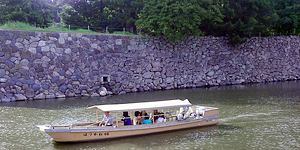
 The Horikawa Sightseeing Boat offers a scenic tour of the Horikawa river that encircles the Matsue Castle and surrounding areas. The approximately 1 hour boat ride, a distance of 3.7km, takes you on a journey of traditional Japanese scenery, which includes the Matsue Castle moat, former samurai residences and age old pine trees. During the winter months, a kotatsu (a low table with an electric heater underneath, covered with a blanket) gives you a warm welcome!
The Horikawa Sightseeing Boat offers a scenic tour of the Horikawa river that encircles the Matsue Castle and surrounding areas. The approximately 1 hour boat ride, a distance of 3.7km, takes you on a journey of traditional Japanese scenery, which includes the Matsue Castle moat, former samurai residences and age old pine trees. During the winter months, a kotatsu (a low table with an electric heater underneath, covered with a blanket) gives you a warm welcome!
-
Yasugibushi Theatre
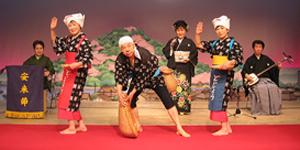
 The Yasugibushi Theatre is situated next to the Adachi Museum of Art. eYasugibushif is a certain kind of folk song and dance, and is very popular in Japan. A dance called eDojousukuif, accompanied with Yasugibushi music, is the humorous depiction of loach fishing, and always makes for a good laugh. There are four daily performances, and visitors can also enjoy some loach at the theatre's restaurant.
The Yasugibushi Theatre is situated next to the Adachi Museum of Art. eYasugibushif is a certain kind of folk song and dance, and is very popular in Japan. A dance called eDojousukuif, accompanied with Yasugibushi music, is the humorous depiction of loach fishing, and always makes for a good laugh. There are four daily performances, and visitors can also enjoy some loach at the theatre's restaurant.
-
Hirose Kasuri Centre
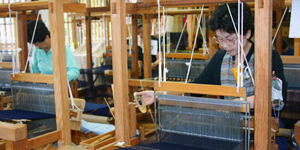
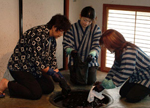 The Hirose Kasuri Center is located inside the Hirose Todajo road station. eHirose Kasurif refers to a traditional method of weaving cloth, and this technique has been designated as an intangible cultural asset by Shimane Prefecture. Visitors can see weavings on the loom and buy handmade Kasuri and indigo-dyed articles.
The Hirose Kasuri Center is located inside the Hirose Todajo road station. eHirose Kasurif refers to a traditional method of weaving cloth, and this technique has been designated as an intangible cultural asset by Shimane Prefecture. Visitors can see weavings on the loom and buy handmade Kasuri and indigo-dyed articles.
-
Shimane Art Museum
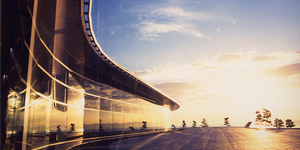
 Shimane Art Museum is situated in Matsue City, Shimane Prefecture, and is one of the largest museums in the Sanfin region. As the museum features the harmony of water and art, it houses and exhibits scores of art works that employ water as a theme. The museum is also known as the perfect spot for viewing the sunset. The museum lobby is open to the public, and visitor can enjoy the sunset from the window wall facing Lake Shinji.
Shimane Art Museum is situated in Matsue City, Shimane Prefecture, and is one of the largest museums in the Sanfin region. As the museum features the harmony of water and art, it houses and exhibits scores of art works that employ water as a theme. The museum is also known as the perfect spot for viewing the sunset. The museum lobby is open to the public, and visitor can enjoy the sunset from the window wall facing Lake Shinji.
-
Life with the Sea Museum
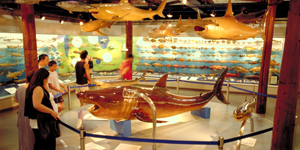
 The Life with the Sea Museum is situated in Sakaiminato City, Tottori Prefecture. An old sake brewery was renovated and reopened as a museum with the theme marine animals and human life. It exhibits 700 species of stuffed fish and sea shells, and at over 4000 pieces it is the largest collection in Japan. Old fishing equipment and the relation between people and fish are also on display. The museum is very unique to Sakaiminato City, one of the best fishing ports in Japan.
The Life with the Sea Museum is situated in Sakaiminato City, Tottori Prefecture. An old sake brewery was renovated and reopened as a museum with the theme marine animals and human life. It exhibits 700 species of stuffed fish and sea shells, and at over 4000 pieces it is the largest collection in Japan. Old fishing equipment and the relation between people and fish are also on display. The museum is very unique to Sakaiminato City, one of the best fishing ports in Japan.
-

-
Matsue Vogel Park
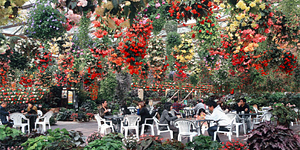
 Matsue Vogel Park is located in Matsue City, Shimane Prefecture. It is the largest indoor garden of flowers and birds in the world. Inside the 8000m² greenhouse about 10,000 Begonias and Fuchsias are in bloom throughout the year. The park houses about 800 birds, of 80 different species, including tropical birds, owls, waterfowl and penguins.
Matsue Vogel Park is located in Matsue City, Shimane Prefecture. It is the largest indoor garden of flowers and birds in the world. Inside the 8000m² greenhouse about 10,000 Begonias and Fuchsias are in bloom throughout the year. The park houses about 800 birds, of 80 different species, including tropical birds, owls, waterfowl and penguins.
-
Marine Thalasso Izumo (Thalassotherapy)
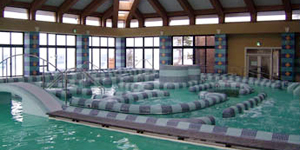 Marine Thalasso Izumo is a thalassotherapy facility overlooking the beautiful scenery of the Sea of Japan. Thalassotherapy is the medical use of seawater, and is an ancient form of healing therapy. It is based on the systematic use of seawater, sea alga and sea mud along with the natural marine climate. At Marine Thalasso Izumo, longer-term stays are possible for the maintenance, increase or recovery of visitorsf health.
Marine Thalasso Izumo is a thalassotherapy facility overlooking the beautiful scenery of the Sea of Japan. Thalassotherapy is the medical use of seawater, and is an ancient form of healing therapy. It is based on the systematic use of seawater, sea alga and sea mud along with the natural marine climate. At Marine Thalasso Izumo, longer-term stays are possible for the maintenance, increase or recovery of visitorsf health.
-
Shimane Winery
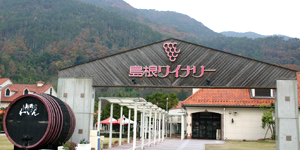
 The Shimane Winery is located near the Izumo Grand Shrine (Izumo Taisha). The winery includes the factory, a restaurant and a souvenir shop. Visitors can taste locally produced wine, and at the restaurant one can enjoy Shimane beef, which is highly regarded nationwide, over a glass of wine.
The Shimane Winery is located near the Izumo Grand Shrine (Izumo Taisha). The winery includes the factory, a restaurant and a souvenir shop. Visitors can taste locally produced wine, and at the restaurant one can enjoy Shimane beef, which is highly regarded nationwide, over a glass of wine.
-
Shimane Hana no Sato
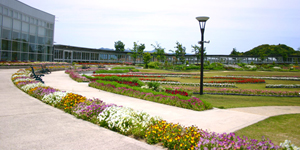
-
Karakoro Art Studio
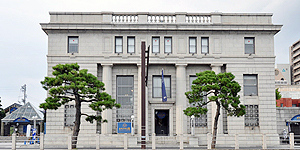
-
Izumo Dome
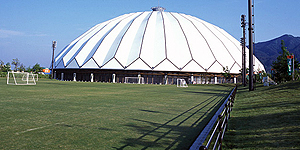
-
Yumeminato Park and Yumeminato Tower
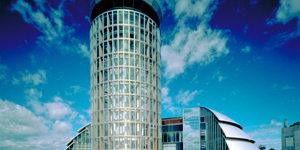
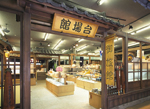 Both the Yumeminato Park and Tower are situated on the shore next to Sakaiminato City, Tottori Prefecture. The Sea of Japan and Mt. Daisen are amongst the scenery visitors can enjoy in their 360º from the top of the 43m Yumeminato Tower. The tower also includes souvenir shops and tower's cafe with a superb view. Items produced in Tottori Prefecture and from countries surrounding the Sea of Japan Sea are also on display.
Both the Yumeminato Park and Tower are situated on the shore next to Sakaiminato City, Tottori Prefecture. The Sea of Japan and Mt. Daisen are amongst the scenery visitors can enjoy in their 360º from the top of the 43m Yumeminato Tower. The tower also includes souvenir shops and tower's cafe with a superb view. Items produced in Tottori Prefecture and from countries surrounding the Sea of Japan Sea are also on display.
-
Sakaiminato Marine Products Markets
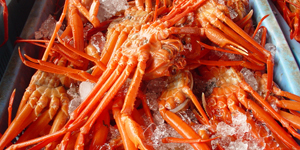
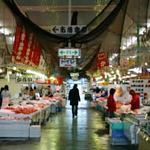 There are some fresh fish markets in Sakaiminato City, one of the best fishing ports in Japan. The Sakaiminato Marine Products Direct Sales Center is located right by the fish market and sells fresh fish at special prices. The Nakaura Fish Market is a marine products specialty store selling fresh fish, processed fish products and souvenirs. The Sakaiminato Fish Center, one of the largest marine products stores in western Japan, is located next to the Yumeminato Tower.
There are some fresh fish markets in Sakaiminato City, one of the best fishing ports in Japan. The Sakaiminato Marine Products Direct Sales Center is located right by the fish market and sells fresh fish at special prices. The Nakaura Fish Market is a marine products specialty store selling fresh fish, processed fish products and souvenirs. The Sakaiminato Fish Center, one of the largest marine products stores in western Japan, is located next to the Yumeminato Tower.
>> Map Spot

-
 View Visit Ancient Sanin in a larger map
View Visit Ancient Sanin in a larger map
Map Daisen
View Visit Ancient Sanin in a larger map
Map Izumo
View Visit Ancient Sanin in a larger map
Map Yasugi
View Visit Ancient Sanin in a larger map
Map Matsue
View Visit Ancient Sanin in a larger map













































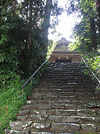 The Kamosu Shrine is situated in Matsue City, Shimane Prefecture, and enshrines the deities of marriage eIzanagif and eIzanamif. The main hall is the oldest remaining Taisha-zukuri style shrine, and is a designated national treasure.
The Kamosu Shrine is situated in Matsue City, Shimane Prefecture, and enshrines the deities of marriage eIzanagif and eIzanamif. The main hall is the oldest remaining Taisha-zukuri style shrine, and is a designated national treasure.





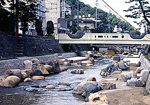 Tamatsukuri Hot Springs is one of the oldest hot springs in Japan. The hot springs has a
history dating back to at least 733 AD, where it was introduced as "The
Bath of the Gods" in the Ancient Chronicles of Izumo.
Tamatsukuri Hot Springs is one of the oldest hot springs in Japan. The hot springs has a
history dating back to at least 733 AD, where it was introduced as "The
Bath of the Gods" in the Ancient Chronicles of Izumo. 





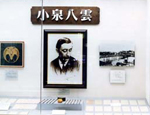 Lafcadio Hearn is a writer well known for collecting Japanese folk ghost stories such as Miminashi-Houichi and Yuki-onna. The museum boasts about 200 display items out of over 1000 articles belonging to Hearn, and introduces his entire life.
Lafcadio Hearn is a writer well known for collecting Japanese folk ghost stories such as Miminashi-Houichi and Yuki-onna. The museum boasts about 200 display items out of over 1000 articles belonging to Hearn, and introduces his entire life.











 Shimane Hana no Sato is a flower park in Izumo City, Shimane Prefecture. It has a large open lawn, herb garden and a conservatory. Various flower-related workshops such as group plantings and gardening classes are held there on a regular basis.
Shimane Hana no Sato is a flower park in Izumo City, Shimane Prefecture. It has a large open lawn, herb garden and a conservatory. Various flower-related workshops such as group plantings and gardening classes are held there on a regular basis.

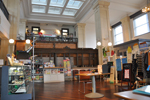 The Karakoro Art Studio is located in Matsue City, Shimane Prefecture. It is an old bank building that was restored and reopened as a handicraft center containing both production and sales facilities. A variety of food and drink is also available.
The Karakoro Art Studio is located in Matsue City, Shimane Prefecture. It is an old bank building that was restored and reopened as a handicraft center containing both production and sales facilities. A variety of food and drink is also available.

 The Izumo Dome is an indoor sporting arena in Izumo City, Shimane Prefecture. It was built in 1992 as Japanfs first wooden dome building, and has a diameter of 140.7m and stands 48.9m high. The arena can host 2,500 people.
The Izumo Dome is an indoor sporting arena in Izumo City, Shimane Prefecture. It was built in 1992 as Japanfs first wooden dome building, and has a diameter of 140.7m and stands 48.9m high. The arena can host 2,500 people.


